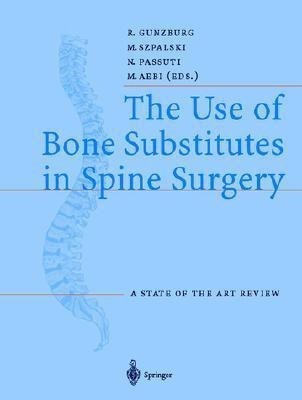The Use of Bone Substitutes in Spine Surgery(English, Paperback, unknown)
Quick Overview
Product Price Comparison
Spinal arthrodesis is a generally accepted procedure for the management of patients with a variety of spinal disor- ders. The primary goal for spinal fusion is to eliminate the instability of the spine, often caused by trauma, deformity, tumor, inflammation or infection, and common degenera- tive deterioration of the motion segments. In many clini- FRA paw', cal situations, the optimal solution in restoring the spine's integrity is through surgical intervention. There are many techniques of spinal fusion applicable to the lumbar spine. Posterior (PLIF) and anterior lumbar interbody fusion (ALIF) have been developed and employed to address PLlI' po . . . . . these concerns alone or in combination with various inter- nal fixation devices. The anterior column is often recon- structed with metallic intervertebral cages or biological Fig. ! Femoral ring allograft (FRA) and posterior lumbar inter- implants (allograft or autograft bone) [16, 31]. body fusion (PLlF) spacers The success of every spine fusion procedure depends on the phenomenon of bone healing. Whether the healing process occurs depends on many factors, including the type This paper aims to provide a review of the two newly of biological graft, host factors, technique, and the rigidity developed biological cages, the femoral ring allograft of the particular surgical construct. Bone grafts serve two (FRA) spacer and the posterior lumbar interbody fusion main functions: they provide for the synthesis of new bone (PLIF) spacer (Fig. 1).


